Chas Levin
Western Thunderer
With the Lancia 3Ro's raised strapping pieces in place, the body sections can be detached from the sprue, which has provided a very convenient way to manipulate them up to now:
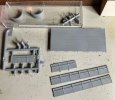
Once the basic body was assembled, a quick trial fit of the body and cab on the chassis:
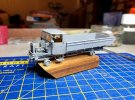
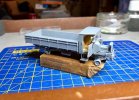
As you can see, the body is quite different from either version as catered for in the kit, one of which has the full canopy and one the framework for it, both of which are gone in favour of a low wooden look, more like the civilian versions of the vehicle.
There are a couple of chassis variations, mainly concerning whether or not to include a battery:
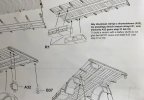
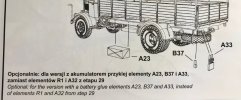
Does anyone know which might be more suitable for a civilian version - battery, or storage box? Would batteries have been a military enhancment, perhaps to do with long range operation, or specialist tasks? I have found some info on these lorries (most notably at https://tanks-encyclopedia.com/lancia-3ro/) but no mention of variations and the reasons behind them other than things to do with the body and cab. One of the notable military variants was the Mobile Workshop which I'd assume would have need of extra battery power. Interestingly though, amongst the photos of civilian versions I've found, while most seem to have the storage boxes, a few do have what look like the battery so I think it could be either...

Once the basic body was assembled, a quick trial fit of the body and cab on the chassis:


As you can see, the body is quite different from either version as catered for in the kit, one of which has the full canopy and one the framework for it, both of which are gone in favour of a low wooden look, more like the civilian versions of the vehicle.
There are a couple of chassis variations, mainly concerning whether or not to include a battery:


Does anyone know which might be more suitable for a civilian version - battery, or storage box? Would batteries have been a military enhancment, perhaps to do with long range operation, or specialist tasks? I have found some info on these lorries (most notably at https://tanks-encyclopedia.com/lancia-3ro/) but no mention of variations and the reasons behind them other than things to do with the body and cab. One of the notable military variants was the Mobile Workshop which I'd assume would have need of extra battery power. Interestingly though, amongst the photos of civilian versions I've found, while most seem to have the storage boxes, a few do have what look like the battery so I think it could be either...















































